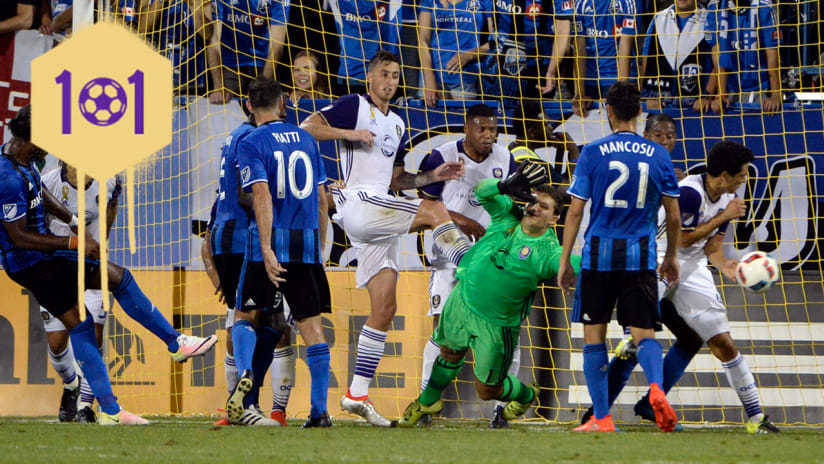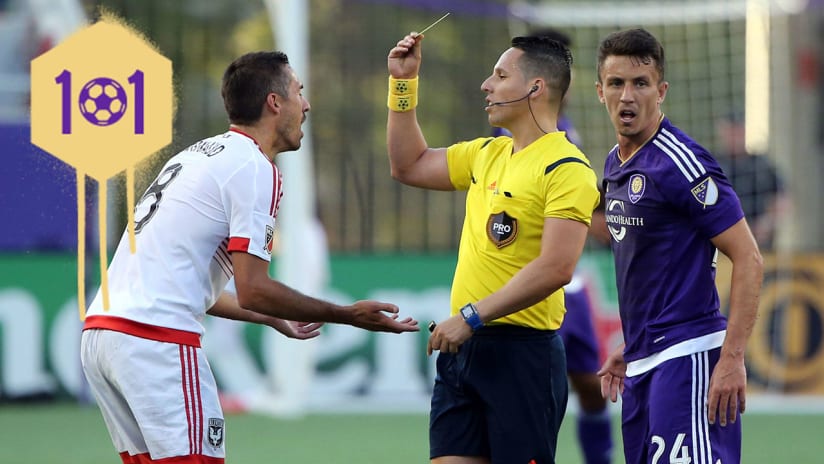In soccer, one of the most regular stoppages in play is a result from the violation of a player being determined to be “offside”. The infraction is very common. Once the rule is explained, it is quite easy to be spotted.
According to the FIFA rulebook, a player is in an offside position if:
- He is nearer to his opponents’ goal line than both the ball and the second last opponent.
- A violation will occur when he is in an offside position (previous bullet point) at the same time the ball is being passed forward to him.
A player is NOT in an offside position if:
- He is in his own half of the field of play.
- No part of the attacking player (head, body, or feet) is closer to the opponents goal than the final defender (not including the goalkeeper) .
- He is receiving the ball from a throw-in.
We know. It can still be a little confusing. It’s really easier to see it rather than read it. Let’s look at some examples:
Not offside:
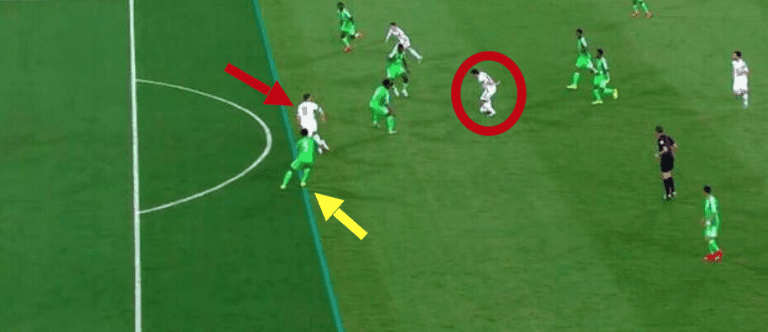
In this image above, the player in the red circle is getting ready to pass the ball to the player with the red arrow pointed at him. Since the player with the red arrow has NO part of his body past the second to last defender (yellow arrow. Remember, the goal keeper is behind him), the player is NOT in an offside position.
Offside:
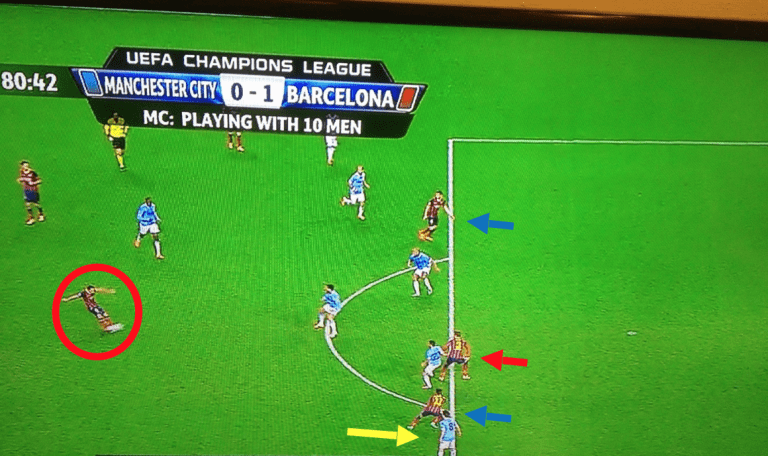
In the picture above, the player in the red circle is getting ready to pass the ball forward to one of his teammates. The player with the red arrow pointed at him is in an offside position. The reason for that is because his body is past the player with the yellow arrow pointed at him who is considered the second to last defender (Don’t forget the goalkeeper!). He is considered the second to last defender because he is the closer to his own goal line than any other player besides the goalkeeper.
However, if the player in the red circle decided to pass it to a player with a blue arrow, than it would not be considered offside because both players with blue arrows are not past the final defender (yellow arrow).
Offside on a set piece or free kick:
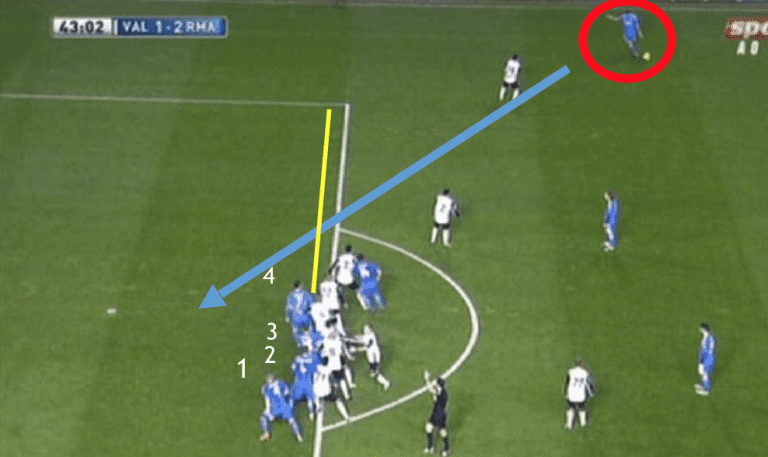
The image above shows a “set piece” getting ready to play out. The player in the red circle is getting ready to pass the ball to the center of the box (where the blue arrow is pointing). His goal is to have one of his own players hit the ball with their head in order to put the ball in the net. However, at the moment the ball is kicked, four players from the team in blue are all past the final defender (the last defender is marked at the yellow line). If any of those players touch the ball, the play would be ruled offside.





